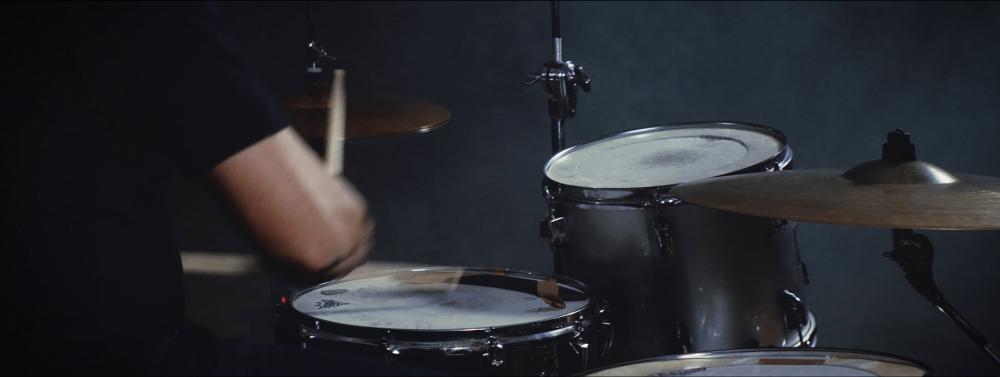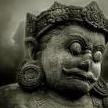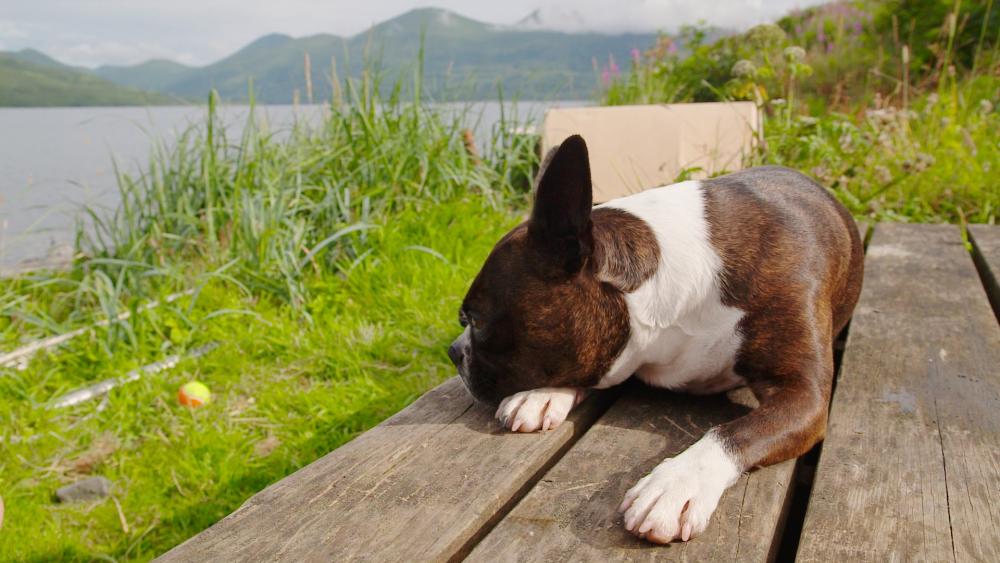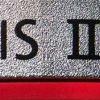Leaderboard
Popular Content
Showing content with the highest reputation on 01/18/2017 in all areas
-
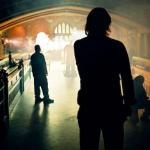
Please explain: Video vs. "organic"/cinematic look
JazzBox and 3 others reacted to John Brawley for a topic
Yes but are you wanting something to look like it's shot on film or to look cinematic. Those are different goals in my view. Seinfeld was shot on 35mm. But it's not cinematic. By pointing to lensing, lighting and staging, I was trying to say indirectly it's not really the "camera" or the film look recipe you have in post. All that stuff happens before the image is captured. It's mise en scene. It's an important part of these discussions that always seems to get left out. The tech stuff can help, but in my view, the objects you shoot, the lens you choose to shoot them with, where you put the camera and how you light them and how those elements iteract all matter a lot more than any magic bullet (pun intended) you think you can have in post to emulate that look. And in order for the post film look recipes to work, you need a camera with high dynamic range and high bit depth. Which is why I mention those elements next. Even when you have a scene that appears to have low DR, film has a way of rolling off highlights that you can emulate if you have the DR to do it. So you take your 14 stop original, crush it to fit into the 8 stop TV you're looking at and jam the extra stops into the highlights to give you a softer roll off. And in swinging the grade around a high bit depth stops the image from breaking down and looking blocky and digital. Film has always been not that great by any technical measure, but it's always something we try to emulate. So far I haven't seen anything that matches the way grain size changes with exposure though for example. Film grain size gets tends to get smaller or tighter as it goes towards clipping and larger when it's underexposed. In the same image you have different sized grain depending on where it sits on the exposure curve. That's hard to emulate in an image in a way that's realistic (as a match) because we're often mapping a much higher DR from the camera to a lower display DR. The colour fidelity is also something that's hard to describe. No one ever publishes the colour response of their sensors, but film still has the edge. And yeah, just because they have a file that's labeled REC 2020 doesn't mean that file has 2020 worth of info. Again a higher bit depth image means you can stretch the colour information out a bit before it breaks down. You're also confusing display technology with capture technology. Just because you tube displays in 8 bit 264, doesn't mean that's all you need for capture. SD tv for many years had a mix of 35mm and electronic cameras. There was always an easy distinction to make on the camera acquisition despite the fact the resolution was the same for both acquisition technologies. Super-sampling has been happening since the beginning and is always going to trickle down to lessor display mediums. Otherwise you'd be happy with what your iPhone shoots right ? Don't fall for that trick. Compression factors here too in this, but this is a different conversation. JB4 points -
@Axel I tested the Pana AF modes intensively (last time two weeks ago) with the FZ1000. The more you test different modes and scenarios, the more usable it will be for shooters needing a reliable AF in combination with MF. I compared it with the very good AF of the NX1. (Personally I consider Canons DPAF to be number one, some Sony cameras numjber two, NX1 and X-T2 number 3) The test: FZ1000 + NX1 both set on face recognition, subject walking forth camera, cameraman walking back in round about 1,2m distance to subject. Both cameras with F2.8. Results were absolutely comparable, Pana with no wobbling or hunting. The subject did a moderate walk (not slow, not fast)...I wouldn't have expected this... With "multi area" (eg subject turns face away from camera), the Pana is hunting, oftenly searching for more contrasty structures (background). In these cases (intensively tested too), it is very useful to determine a flexible AF area - the extent of the AF area can be extended - which can be moved in every direction and place you want. Using this method, focus never hunts (in static situations), even if background is much more contrasty than the subject: You just have to keep your subject within the predetermined focusing area. There are many complaints on the pana AF hunting (hunting for more contrast, "wobbling" etc. in AF) but I think, users should test more the different modes and adapt this to their preferences... I don't know (I never hold the GH5 in my hands) but to be honest, I don't expect an AF similar to the big "AF-Gorillas" (Canon, Sony, Samsung and Fuji as descripted above), but I find the Pana AF usable. I used it in quite "impossible" situations and in the dark (a night concert on a stage in Romania) and - despite the 1" sensor and crop - it did very well at long zoom (about F4). It tracked faces like hell, I was very happy - i never would expect it but this showed me how important it is to extensively test for knowing how to handle camera strengths and limitations...3 points
-

When to shoot 4:3 or 16:9 with Anamorphot 2x
Dr. Verbel' and 2 others reacted to funkyou86 for a topic
Hey Adam and welcome to the club I think that first, you have to understand your sensor. GH4 has a 4 by 3 sensor, that's why it is a micro four thirds. When filming in 16:9, you got a 16:9 crop image from the 4:3 sensor. When filming in 4:3 anamorphic mode, your GH4 uses the whole sensor. Also, shooting on 16:9 with 2x anamorphics gives you 3.55:1, very wide aspect ratio, see the attached dog. Shooting on 4:3 gives you 2.66:1 aspect ratio, see the attached drumset. There are no rules, you have to know what you're aiming for. Shooting with the GH4 on 4:3 has it's own advantages and if 2.66:1 is still too wide, you can crop in to 2.39:1 cinema standard aspec ratio. Due 4K you won't loose resolution if exporting to 1080p.3 points -
Interesting 2016 Sales Figures
jonpais and one other reacted to Mattias Burling for a topic
I have used it a bit. 1. Yes 2. Metabones work great. 3. Yes. 4. Its ok imo. 5. On par I guess or the NX1 might be a tad better. Here is IS and AF with canon glass. This is all hand-held with a Canon 35mm IS.2 points -
Interesting 2016 Sales Figures
Justin Bacle and one other reacted to Kisaha for a topic
..and I was wondering if JVC ever sold more than 200 cameras! You all know that I believe LS300 is in the right direction and best value for money. I just used it a few hours ago, for this documentary series I work, but a mkII can fix (or improve) on some issues, that can make this camera, truly the best value for money video camera on the market. I am expecting an LS300 by Panasonic too. Nikon is going DOWN.. Very good reading of the charts @IronFilm , missed those two!2 points -
ohhhh..... reading further I see you already have a ME66, & you're rather budget constrained. Thus I think you should get yourself a ME64!! It is almost a no brainer decision. I picked up a ME64 capsule for only $99 on eBay last night! & they're only $150 to buy brand new.2 points
-
Actually Canon, Nikon and (now) Sony have pretty good supply chain and after sales. Panasonic is mostly a damn squid in India. I even met one of the directors from Panasonic (Japan) here (I think he was their product head), and I figured that the India operations needs a major overhaul. There is no reason why they aren't bringing most of their ILC models and why they shouldn't prioritise the GH5 with regard to India and China. Terrible planning, more than anything else. And supply chain. And after sales.2 points
-
It is definitely not competing with the best microphones out there, I see it more as a Rode killer, than anything. Do not feel like a lot of top pro sound men replace their 416es or 60s for this, but instead of one of the cheap Rodes, I can see getting this as a second or third mic. It is also a lot wider than 416, which is a no no for me and most top professionals, but the weather sealing, the wide patter and the cheap price of the kit it makes it an excellent back up plan, or crash-mic, or first mic for one man band professionals that sound is their second or third, or forth, (or fifth!) thought, or new sound men and boom ops that afraid to handle the not so forgiving Sennys. The Rode/Rycote thingy costs around 80$, and the Rycote with the new softie (which I tried, and didn't excited me very much) is https://www.bhphotovideo.com/c/product/263721-REG/Rycote_033702_Medium_Hole_Softie_Lyre.html in a very good price. I will be waiting for more reviews, and probably a small price drop, and see if it take me away from the MKE 600, which I was considering as a back up mic.2 points
-
2 points
-
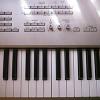
Building a Library of Images for Everyone
Yufei Chen reacted to Eric Matyas for a topic
Hi everyone, I've been building a library of images that you are welcome to use in your projects. They might be useful under titles, for visual effects or anything else you can think of. They are all original...all my own work. All I ask is to be attributed as indicated on my homepage: http://soundimage.org/ The images are on my "TXR" pages (for "Textures.") I'm adding new ones all the time, so be sure to check back often. I sincerely hope that some of them are useful. Any and all constructive feedback is welcome and always appreciated. :-) All the best, Eric1 point -
Silly Asians, always taking footage with their tablet. I'm interested in the Rollei cage though. Fits a bunch of cameras. Nice expandability. I've seen projects like the one above on crowdfunding campaigns (Kickstarter/Indiegogo). Though I guess they're more for smartphones and GoPros.1 point
-
I'd rather have a camera be fully manual like my old Bolex 16mm or the Ursa Mini (insofar as you have two parameters to worry about: exposure and focus, even WB isn't important). I'd try to "customize" the GH5 to do that. Waveform would be an assistant for better exposure, peaking for better focus. AF - perhaps -for certain challenges, IBIS -perhaps - for others, both assisting me to achieve exactly what I have in mind. If the camera has automatic features, I'd trust them only so far as I could fully control them, delegate a thoroughly tested routine to them. I predict we are going to see hundreds of terribly degraded v-log clips this year, slomos of paint drying, terminator-vision autofocus and far away sparrows in 7,5 x slomo, terribly graded with focus transitions to a wind wheel in the foreground. That's when they fell in love with the GH5's virtues but never thought of controlling them. You can turn that off in the menu, was the same with GH2, there it was the default.1 point
-
Panasonic GH5 - all is revealed!
jonpais reacted to Fritz Pierre for a topic
@jonpais...yes...LUT preview is going to be available with the GH5...I think you're going to be able to load up to four preview LUTS, of your own choice though, (I hope!)...must say I'm very impressed with @Neumann Films LUT used in the footage he provided....I've shot with Vlog L both internally and on a external device...you have to pick your battles, but you get used to it and if you use Leeming's ETTR exposure method (listed on his website) it's fantastic!...(but for me the camera is really just a stepping stone to the story)...other's needs obviously differ hugely from my own...a last thought on VlogL for your ears only...if you're shooting internally....even on the GH4 you have to pick your battles...as my interest is narrative only, I can!...also production design....controlling wall color etc. makes a huge difference...not to reopen a tired old argument, but in fairness to Panny, I don't think it was really intended as a "walk around" tool, but a more professional enhancement tool...I am probably alone in saying that I'm glad they did not make the camera a $100 more expensive and include this, but made it a paid upgrade only for those who really want it....otherwise you land up with a lot of negative feedback when someone tries to use Vlog in a way not intended by the designers....+1 on the clumsy implementation method...they must have their reasoning I guess!1 point -
@mechanicalEYE Looks great, but at 0:22 - 0:26 you can see, this is NOT AF. This was manual focus...Or is your posting not in context of AF? Dynamic shots (moving mountain bike) are with one hand gimbal and AF? Thank you for response!1 point
-
1 point
-
@jonpais @Axel I will make a video with these facts within the next two weeks. There are some more facts to consider, I've written them down. Example: During a concert in late August 2016, I made an interview with a band menber. It was a very bright, sunny day, the man stood (not sitting), the background was green (grass) and water. With standard AF it was impossible to get the artist in a constant focus with AF. The camera simply focused on background...Why? No clue... What I did: Though it was very bright (full sun and about 36 degrees Celsius, I remember very well), I put a LED light on his face. The hunting was gone... BTW: Distance to the subject (artist face and some of his chest) was about 65cm. During another run&gun interview, i put the FZ1000 very close to the face of my interview partner (hand held with Sennheiser mic on hot shoe). The interview was outdoor...The camera hunted like crazy on background...I got a miserable picture quality, it was pure garbage... The last "dramatic" situation was for me during an interview with a German bishop, I have loosed because I was alone and had to use AF...The camera hunted on background instead of focusing on bishops face (the guy simply didn't stand still - but this is the reality)...This was a desaster... After that I was tired of mediocre "AF footage", I begun to "study" the different scenarios and modes. I just wanted to get as reliable results as possible, not depending on luck when using AF. After some time of shooting and study, I got some good results: Quite perfect in focus footage of persons using AF in different modes (persons moving forth and back from camera, interview situations when subjects move a little bit forth and back). So far I am very happy with the results of my FZ1000. As you know, being perfectly on focus is one of the most important factors of my filming / photography. When possible I always use MF with additional control monitor (even when using a big shoulder camera), but when it isn't possible (unespectable run&gun situations, one man band, etc.) I need a reliable AF. @jonpais You shoot very much portraiture (faces). For this the two described methods (1. Face detection and 2. Specified area focusing) are quite reliable, in my eyes in more than 90% of situations). I will try to write down my experience and settings with the FZ1000 (but these settings are similar on all Pana consumer cameras) and will post some footage with excellent face tracking in low light. I will try being very precise in describing the situations, I used the different modes.... BTW: In cases with more than one face, it begins to get hard - because the camera can NOT know which of the faces you want to keep in focus (assuming you have Face1 about 1,5m, Face2 about 2,5m and Face3 about 4m far away from camera - subjects spread all over your field of view)... Please consider that I am not a experienced reviewer at all. I can only debate on practical facts I have experienced a lot of times.1 point
-
I am not a native speaker, I can't feel those niceties. I use many terms because others use them and so they seem appropriate. Should I have written natural instead? I don't think so. Focus isn't anything you are away of when seeing the world around you. Sure, you can hold your index finger in front of your nose and simultaneously look at the television tower on the horizon, but you wouldn't usually do that. DoF only exists in images, it has to do with aesthetics and sometimes with film language. She was so absorbed in thoughts, the world around her blurred. What we do though (but not by visually blurring the background and thereby isolating the object of interest) is that we perceive selectively. Test this: watch one individual in a crowd for a few minutes. You'll notice that you drift into some kind of trance. You know that there are other people around, cars, trees, traffic signs, you actually see them peripherally, but they become marginal. Your FoV is vignetted - it really physically is, like right now. I know there stands a bookshelf on my right side while I'm looking at the monitor, I know the books have different colors, but it's just as if they were blurred. Focussing has to feel right. How can you teach a software to make an adjustment feel right? Only if it allows you to program it.1 point
-
Like cooking, need to bake the footage ; ) Like love, a plant needs lot of care. Like life, stomach won't fill up with water nor alcohol all the time. Neither love. Filmmaking is not love making but certain rules apply ;-) Sorry for so strikingly technical reply... :-))1 point
-

Interesting 2016 Sales Figures
Mattias Burling reacted to bamigoreng for a topic
Really well done. Cool music.1 point -
Edelkrone Wing
Ed Andrews reacted to pablogrollan for a topic
This one is like the glidearm but a lot cheaper... (from 700$ to 300$) https://www.came-tv.com/products/came-tv-folding-arm-slider-sl02 Still, it seems easier to use a proper head on Edelkone's wing but it is an expensive product without any assurance of how it's going to perform.1 point -

Warning: Do not get Devinchi Resolve for NX1 Native editing.
SMGJohn reacted to Drew Veeneman for a topic
Even if you could get H265 4k video into Resolve, I doubt it would play smooth. That codec is really demanding on a cpu in playback... And could you imagine after you graded it? I use Resolve(the FREE version) as part of my work flow after trans-coding it to DNxHR HQ. Aside from chomping up hard-drive space it works fine. I'd recommend using that money to get a good toaster (External USB 3.0 HDD dock) and some extra drives rather than a Resolve dongle. H265 is great to shoot 4K onto your SD Card in a compact fashion, however once get back to your computer you'll want to convert it to an edit friendly codec as fast as you can.1 point -

Samsung NX Speed Booster
lucabutera reacted to SMGJohn for a topic
https://www.produzionidalbasso.com/project/samsung-nx-camera-to-full-frame-with-nxl-adapter/ This one is the V2??1 point -
@gatopardo Nope, sony f3. I gotta say I love everything but the bulk of the camera. The image even with just the internal recording is so far ahead of anything i've used before. I really liked the xc10 but the quality just drops off a cliff after iso 800, which with the slow lens happens in all but direct sunlight. I think canon tried to over sell the specs and cover up the ghosting which they fixed with a new version of the camera. Thats the reason I'll never buy anything new from canon again. I hope they are reading this thread.1 point
-
Wow. Sigma beat Nikon for lenses sold :-o JVC came third to Panasonic and Sony for video cameras. Hope JVC makes a LS300 mk2. Sony did not make the top three for SLRs with their A mount cameras.1 point
-
I don't think that's it. It is important to differentiate between what looks "filmic"/"cinematic" and what looks like it was shot with film. Consider this home movie and this home movie. In regards to lighting, lensing and staging, there is nothing particularly filmic/cinematic about these home movies, but both of them were unmistakeably shot on film. Also, the dynamic range of the stock was probably equivalent to a 7 1/2 stop or less capture range. Just before digital took over, negative stock was generally rated at only 7 1/2 to 8 1/2 stops capture range, with normal processing. So, the technical capture range of today's pro and prosumer cameras is greater than film stocks. Furthermore, those home movies are channeled through 8-bit, YouTube pipes, so the bit depth of what we are viewing is only 8-bits, yet the footage is obviously captured on film. It's something else... a combination of variables that can be quantified for the most part. The Filmlook people and Eddie Barber (with his Vilm camera) were early pioneers in making video look like film, and they evidently did a thorough analysis of the variables involved. I never used Filmlook but I did shoot with the Vilm camera, and I was able to glean a little on how it is done.1 point
-

Sony A7S II compression issues
Matt Weiss reacted to Don Kotlos for a topic
Its fairly rare but sometimes SD cards do go bad. Sandisk extreme pro should be fine but lexar professional is good as well.1 point -

Sony A7S II compression issues
jcs reacted to Don Kotlos for a topic
My guess would be the SD card. Try another card that is always formatted in camera and see if you can replicate it.1 point -

First Time Posting - Introducing myself with a new camera reel
Geoff CB reacted to Justin Bacle for a topic
Hi and welcome here Here are a couple of remarks (after viewing it twice) : - It is quite long, i think you don't need 2 min but less than 1, try to keep it concise. - Begin by the stuff which has more chance keeping attention. I think the car sequence or nature sequences have a better overall look than the narrative stuff you put at the beginning. Just my two cents. - Make a nice overlay and a bit smaller. The text you put is quite big but isn't that visible still. A nice but small animated overlay with a two-word description of the shot you are seeing (like Project Name & Date) would be a better solution IMO. Here is the good stuff now : - The car sequences look good, so does the mountain sequence and snow sequences Here is the stuff I don't know what to think about : - The music (As I don't know what to say, no details here :o) Nice to see an F3 user here ! Did you get it used recently ? I'd love to get my hands on one1 point -
Was the ME66 shotgun mic boom operated or camera mounted? If camera mounted it may not help much since the main advantage of a shotgun mic is pointing the broad side toward unwanted sound. It is not like an "audio telescope". If this is an interview, you may need to frame it tighter to get the mic closer. If it is simply voiceover dialog, you can get the mic as close as necessary. If this is a scripted narrative involving subject/actor movement, then you may need the mic further away which could be pretty hard. A high-quality lav like a Sennheiser G3 if place well usually does pretty good. Sennheiser also makes a cardioid mic for the G3 lavs called the ME-4N. This may have some advantages over the stock omni-pattern mic if placed correctly: http://a.co/dbDpkE4 If a boom operated shotgun, you have many options about placement. In a large "echoey" sports gym if you place the mic low and angled upward the speaker, it may pick up sounds bouncing off the reflective ceiling above him. OTOH if you place the mic above him and pointed down it might block some of that out. You said you have no real options to change the room, but simply letting the subject stand on a sound blanket (or even a small carpet) and aiming the shotgun mic down might help. That way the blanket attenuates reflections from the floor and the mic null pattern attenuates sound reflected from the ceiling and walls. Monitoring the audio with good headphones and testing various mic angles and positions at the specific venue and position -- before shooting -- can help. If possible it's best to have a dedicated sound person.1 point
-

Samsung NX Speed Booster
RieGo reacted to lucabutera for a topic
I Spent many nights to create the NXL, I started with a vision and with the contribution of all those who have bought and tried I could improve it. The boards of all were useful, I alone could not test it with all the lenses and detect the defects, a project carried out in crowdfunding is this. To answer your question, I must tell you that in reality this would be the Mark XXX version, but I prefer to stick to the NXL version. Currently, the construction costs are very high because it has made in Italy and in a limited number of pieces, so I can not reduce the price, but it remains a good investment given the rarity of the piece, maybe will be revaluated as anamorphic lenses. ALSO I AM SURE THAT SAMSUNG RESUME PRODUCTION OF CAMERAS JUST HAVE INTERNAL PROBLEMS SOLVED AND REORGANIZED THEIR COMPANY.1 point -
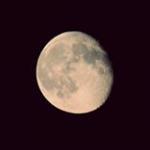
Interesting 2016 Sales Figures
rooney111 reacted to Marco Tecno for a topic
I was not clear. I wanted to say...if canon had a mirrorless camera as good as nx1, a6500 or x-t2....which it has not.1 point -

Interesting 2016 Sales Figures
rooney111 reacted to Marco Tecno for a topic
If canon had a camera like nx1/a6500/xt2, very few ppl would care about other brands/cameras. Canon brand is simply to strong and camera market is made of loyal customers, averse to change.1 point -

Petition for Samsung NX1 hack
Juxx989 reacted to Marco Tecno for a topic
Blah, try contacting otto k or kinoseed.1 point -

Lenses
webrunner5 reacted to Cinegain for a topic
Yeah, I'd like a Olympus E-M1 Mark II body, with Sony APS-C sensor performance, Fujifilm processing and compact solid Sigma lenses native to the mount in relation to sensor size. Everybody's pretty good at their own thing. Nobody really nails it all. I guess that's how they survive. Keep people wanting for more...1 point -
Dxo marks always been like that. It's not THE reference ..it's only a reference for those who actually know how to read the graphs and analyse some of the results. Overall score means as much as saying that the sky is blue.1 point
-
Opinion - DXOMark's camera scoring makes ZERO sense!
ttbek reacted to BlueBomberTurbo for a topic
I do agree that DXO's rankings are a bit questionable, but not too far off. There are generally valid explanations of the issues you cited: NX500 over 5DS and NX1: I've personally handled 5DSR files, and can say that the IQ is terrible. Even Canon stated not to expect much more than their old APS-C cameras in the IQ department. I've read a few times that the NX500 is considered to have higher IQ than the NX1. By how much, I don't know. But viewing test RAWs of the NX1, I'd say DR and high ISO are around 1/2 stop behind the Nikon D7200. DXO One: Its Super RAW literally is super. It takes 4 RAW files, stacks them, and averages out the noise. The difference is dramatic. While the detail level isn't the best at high ISO, the lack of noise is well beyond FF capability. This is similar to Olympus' high res RAW mode, but instead of increasing resolution, it reduces noise and increases detail at the same output size. D3X over D5: The D5 is a bomb below ISO 1600, nearly matching the 5D III. Even crop sensors beat it. The sensor is tuned for mid/high ISO performance, though current technology only goes so far. The gains, while there (+1/2 stop vs 1DX II), really aren't worth the trade off for the flexibility in low ISO RAW. Worthy of note is that the D3X has a Sony sensor, while the D5 is Nikon's own creation. D600 over 1DX II and P40+: It's true. The D600 kills the 1DX II in DR at base ISO, and at worst, ties it the rest of the way up. the 1DX II literally has years-old crop sensor performance in that area, despite Canon's massive gain in their new generation of sensors. High ISO is also neck and neck. Vs the P40+, the sensor in the MF camera is quite old. Despite having the resolution advantage, it loses out in DR and high ISO by quite a big margin. By ISO 1600, colors turn to mush, which doesn't really happen on the D600 at any ISO. D3s and D700: I've also worked with files from a D700 multiple times, and can say that yes, its sensor is outdated at this point. It's competitive with today's crop sensor cameras (minus Canon's) at best. The A7S/II sensor has been compared to current medium format in its DR and ability to reproduce color. Once again, the D3s/D700's sensor is Nikon's own. Nikon isn't very competitive when it comes to sensors, and probably had its best attempt at competing with Sony in the D4/s/f. All of the rest of their sensors just don't stand out, though aren't as bad as Canon's. I have a feeling that resolution plays a big part in DXO's rankings. If you downscale the A7R II's files to A7S II size, they will certainly have an advantage in their "Sports" rating. It might also be why the A7R II beats the D810, when the D810 clearly has about 1/3 stop advantage at high ISO. My friend tested 2x A7R IIs before returning them and keeping his D810. #IQsnob. For DR and high ISO, they test noise up to a certain amount. How they get to that amount, who knows, but it's a cutoff point they chose that represents the transition from "OK" noise to offensive noise. So while sensors may have DR response up to a certain amount of stops, after a point, it becomes wiser to turn things back a bit in software. Where that happens is up to the user, as it's a more subjective choice. And "Color" is more about correctly reproducing color in RAW than how the final JPG is rendered. Color in the Canon sense is highly subjective. Color against a known testing scene/chart isn't.1 point -
DXO has their explanations. https://www.dxomark.com/About/Sensor-scores/Overall-Score https://www.dxomark.com/About/Sensor-scores/Use-Case-Scores Low light score in particular is an actual ISO and I think the easiest to explain. "Sports & action photography: Low-Light ISO Unlike the two previous scenarios in which light is either generous (studio) or stability is assured (landscape), photojournalists and action photographers often struggle with low available light and high motion. Achieving usable image quality is often difficult when pushing ISO. When shooting a moving scene such as a sports event, action photographers’ primary objective is to freeze the motion, giving priority to short exposure time. To compensate for the lack of exposure, they have to increase the ISO setting, which means the SNR will decrease. How far can they go while keeping decent quality? Our low-light ISO metric will tell them. The SNR indicates how much noise is present in an image compared to the actual information (signal). The higher the SNR value, the better the image looks, because details aren't drowned by noise. SNR strength is given in dB, which is a logarithmic scale: an increase of 6 dB corresponds to doubling the SNR, which equates to half the noise for the same signal. An SNR value of 30dB means excellent image quality. Thus low-light ISO is the highest ISO setting for a camera that allows it to achieve an SNR of 30dB while keeping a good dynamic range of 9 EVs and a color depth of 18bits. A difference in low-light ISO of 25% represents 1/3 EV and is only slightly noticeable. As cameras improve, low-light ISO will continuously increase, making this scale open." It has nothing to do with AF etc so I think the sports scores are pretty reasonable maybe more so if you just consider them as low light rather than sports and remember it is based on their criteria. I am fine with using an A7s for night time sports. I use an old manual focus 300 2.8 anyway so it just means I can use a higher shutter speed. None of the shots would be printed huge so 12mp is fine. A modern FF DSLR would be a better sports CAMERA most of the time but does it have a better sports SENSOR (given DXOmarks criteria)? The overall scores are a bit based on voodoo as the bits that go into that are subjective without full explanation as to weighting. I think some of the anomalies might be because of a low number of samples tested given many cameras get slightly different scores with the same sensors. A slight difference might be just enough to take a camera a bit over or a bit under their marks. I don't think the A7s is any noisier than the A7sii and It seems the colour depth might be why the A7sii gets a lower score for low light (the point they cross 18 bits for colour sensitivity). For video it is all a bit silly though as they are only testing RAW stills and most video is Jpeg. I would love to see a site test sensors for video. RAW and otherwise.1 point
-

Opinion - DXOMark's camera scoring makes ZERO sense!
IronFilm reacted to Andrew Reid for a topic
Then there is the curious case of the missing Pentax 645Z score http://pentaxrumors.com/2015/12/25/pentax-645z-scored-101-at-dxomark/ Missing in action! Yes it is. I want all my cameras to be IMAX white from now on.1 point -
I'm having both.... keeping nx1, selling a7s... buying gh5. Adios Sony..... will be happy to see you leave. I love the nx1... will be great alongside the gh51 point
-
I will have my 65L hiking pack. we go there 17 days and will do 2 5 day trek with full autonomy (camp equipment, food,...) So by putting things like tent and so on out of the bag, I easily fit the camera equipment somewhere. Last summer I summited a 5200m peak with a full backpack for 2 people cause my buddy carried a full pack of camera AND DJI phantom 3 which is a huge drone. Dont know how we did that. The mavic is going to make my life easier. A D810 does not scares me after transporting a Phantom 3 with me. I dont know if I should do a classic relaxed video of time lapses with aerial magnificent views with a nice music. Or a more dynamic video in this style : What do you guys think? I do not use tutorial, I just play with multiple settings on Photoshop using masks and local adjustments. And I use different techniques for each image cause I never remember what I did earlier1 point
-
Canon XC10 4K camcorder
webrunner5 reacted to Shirozina for a topic
Olympus 43 12-60 2.8-4 is a very good lens on this camera. Very high resolution, very little distortion or CA as it was not designed to be fixed with an embeded profile like the later M43 lenses.1 point -
Such as 79,400 views for that camera test. Northrup and Dugdale have millions of views by making camera tests entertaining. Whether you agree with them or not, they are creating content that many people enjoy watching. My 'best' camera test only got 26K views- no story and pretty boring (this kindof had a story, though not much really going on (11.5K views)). How about yours?1 point
-
Documentaries tell a story too: all good content tells some kind of story. Test videos or 'art videos' have a very limited audience to the general public. To be honest, calling something 'art' when it's a random jumble of incoherent shots is a cop out. True art tells a story and evokes emotion in a way that words alone cannot. Telling a good story isn't easy, that's why most content leaves us unfulfilled. My first short (which I co-wrote) wasn't very good, as the story was weak. All great filmmakers say the same thing: keep making movies, the first ones won't be very good and don't give up. You'll get better by making more. If one doesn't continue to make more, and learn from each until they are good, then they are stuck where they quit. If one is making a filmed work and not thinking about story, they are missing out on the most important element. Just a little bit of story makes the work much better (even wedding videos, a soccer game, etc.). Save the Cat explains 'the physics of storytelling' and it's right on: http://www.amazon.com/Save-Last-Book-Screenwriting-Youll/dp/1932907009 . If you add story to your next test video / review, it will be much better / easier to watch. Sure it's more work and planning, but well worth the effort. Which reminds me, I need to re-read Save the Cat Her story resonates with me- she was a teacher and also worked some kind of corporate job ('interior office'). After she had her daughter and having learned the basics of pottery she decided to take a risk and start her own business doing what she loved. And she succeeded, which is very rare, starting a business from nothing with no experience and becoming successful on the first go (profitable) . In the end it's more work than a corporate office job, but since she loves what she's doing it's not really work. Doing what you love and getting paid for it, isn't that what everyone wants? That's an inspiring story. Our current project involves interviews which on their own can be boring unless watched by a very small relevant market. So we're adding fun cutaways / animations / graphics to make it more entertaining for a wider audience. What's boring to you may be very interesting to someone else (for example anyone interested in starting their own business, entrepreneurs etc., may find the pottery piece interesting as it involves doing what one loves, art, creativity, recycling, and making enough money to not have to work a corporate job). The pottery piece also shows the 1DX II works well as a doc / short / advertorial camera. Sure, the 1DX II highlights blow out earlier than we'd like (I'll compare to the C300 II's Canon Log 2 at some point (much better than CLog, though requires 10 or more bits)). However I doubt a single non-camera-person consumer would ever notice blown highlights when the subject is properly exposed (they've seen blown highlights for years). IIRC, shooting with highlights at 80 IRE on the WFM (sunlight on a white fence, subject in shadow) with the C300 II resulted in blown highlights which I couldn't fully recover in post with PP CC. My background is image/graphics software and tech (not a camera operator), and intuitively 80 IRE should have been recoverable (where 100 IRE is 'max voltage'/signal value). Guess I'm missing something or there's an issue with PP CC. The point is even the mighty C300 II with Canon Log 2 will clip highlights if care is not taken (need to shoot tests to understand highlight clipping behavior). The 1DX II's strengths are very good color reproduction, including pleasing skin tones, very good (but not perfect by a long shot) PDAF, very nice 4K (and 4K 60p), decent audio preamps, and native Canon lens support without adapters. It's so nice to get footage straight from camera that needs little or no tweaking- that's why we skipped the FS7, FS5, etc. We're voting with our dollars: we're not spending any more money on cameras with poor color science (regardless of bells and whistles).1 point
-
He used the camera to shoot a mini-doc, he told a story; I think he did a pretty good job. Then he discussed how it performed doing the job. A flip out screen would be nice, sounded more like a wish list item (something like a SmallHD 502 effectively solves the need). I stopped using 1080 on the 1DX II as the quality is so much better in 4K (and scaled to 1080p for 1080p projects). The tradeoff is less recording time and storage costs (though minimal as hard drives are so cheap). I haven't even tried 1080p 120 (60 slowed to 24 (2.5x) is good enough. Still have the FS700 for up to 240, but we just haven't needed it (probably sell it soon). The A7S II does decent 1080p 120. The 1DX II's 1080p 120 might be OK for a face close up (similar to 5D3 H.264 resolution, but with aliasing). What is the value of a forum post? Does it contribute knowledge to the community, does it help people, does it solve a problem? Were you ironically joking with the ego comment? Pure technical tests are helpful, as you like to do to and adding a storytelling component where the camera is used in production is even more valuable.1 point
-
1DC vs 1DX II Shootout
Shield3 reacted to independent for a topic
Oh the crazy Japanese. Oh wait, Apple does it too. Oh wait, so does any consumer electronics company. It's called economics in the 21st century, with mass production, globalization, etc. Ah, the days when you had two sets of clothes, one pair of shoes, and it cost you 6 months salary to buy that "television?" You're demanding a perfect camera so you won't have to buy another camera again for the rest of your life. If you want that bargain, then you'd have to make it profitable enough for that company. Buy that Alexa. No? Then you have to deal with compromises and shop at h&m like the rest of the masses and follow the seasonal trends. Look, even apple is struggling because the 5s is good enough for too many people. Ironically, their phones became too good, satisfying consumers as well as pushing their competitors. So Apple now has pressure because consumers are spending less money than expected. That's the power you as a consumer wield. These are consumer electronics companies, and you are the consumer market. There's really only one way to clearly communicate to the company. Buy or don't buy. That's why blackmagic is a welcome addition. Competition lowers prices and drives innovation. There will never be that "perfect" camera if you have the purchasing power of a consumer. Technological advances and expectations will always keep you wanting.1 point



